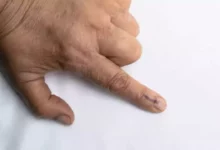Delays in integrating theater commands due to knotty difficulties
The Chief of Defense Staff (CDS), Gen. Anil Chauhan, oversaw the long-planned establishment of integrated theatre commands (ITCs). The recent Parivartan Chintan (contemplation regarding change) related to this proposal was just another example of the military’s top brass reviewing existing ideas but anticipating very different outcomes.

The government claims that top officers from all three services participated in a day-long “brainstorming” session on April 8 in New Delhi, which brought attention to the need to take a “de novo” (new) approach to fostering operational “jointness” in the armed forces. It was said that in order to improve the Indian military’s overall effectiveness and capacity to conduct wars, these discussions highlighted the need to increase interoperability and “jointness.”
But other than confirming that the ITC issue was still open and that the 2022 deadline set by Gen. Chauhan’s predecessor, Gen. Bipin Rawat, for their formation had long since passed, the conclusions drawn from the Parivartan Chintan remained vague. The Department of Military Affairs (DMA), which the CDS leads, has prepared a number of ITC models that, in general, envision creating three tri-service commands: one for each of the nation’s northern and western borders, as well as an overall maritime or peninsular command, with options for “additional others.” However, it now seems that these models are insufficient.
The headquarters of the three interim ITCs, namely Karwar (Karnataka), Lucknow, and Jaipur, had been provisionally assigned. However, a variety of experts assert that several obstacles still face the DMA as the Prime Minister’s Cabinet Committee on Security reviews the ITCs. The most important is the matter of the ITCs’ overall operational command and control, which was ‘hobbled’ from the start by human aspirations, conflicts of interest, and hierarchical rivalries between and within the services.
Despite being the most senior military commander in India, the CDS is not included in this operational equation due to his employment charter. The CDS does not have direct operational military command over any of the three service chiefs under the rules of his appointment. Among his many duties are permitting and enhancing jointness, offering the government unbiased military advice, modernizing the army, and giving equipment purchases priority.
According to recent media reports and security expert studies, the three four-star service chiefs’ only responsibilities in a reformed ITC arrangement would be to hire, train, and assist personnel logistically. The individual chiefs were allegedly “miffed” by this, and it’s possible that the Parivartan Chintan discussed giving them a more active operational role as opposed to just providing assistance.
Furthermore, the chain of military command in the Indian ITC template is said to be based on the US theatre command model, which has the President, the Secretary of Defence, the theater commanders, and so on. These were commanded by a different four-star general, the Chairman of the Joint Chiefs of Staff, who served as an adviser to the US political establishment, much like India’s CDS.
This idea, which is based on US expeditionary doctrines, could be localized to include ITC commanders who report directly to the Defence Minister. The Minister would then act as the final operational authority, much like the US Secretary of Defence, but with no prior military or combat experience. In order to get over this obstacle, a former chief of staff of the Indian Navy proposed at a recent seminar that the Defence Minister be chosen from among the parties by someone who has extensive experience in military matters.
The second, more important problem is the parity in rank and seniority of officers now leading the 17 single-service geographical and functional commands. It is said that this issue dominates conversations within the services and the DMA over the delays in certifying the ITCs. There were seven such commands in the Army and Indian Air Force, and three in the Navy.
Additionally, one immediate consequence of these 17 commands ultimately being consolidated into three, four, or perhaps five ITCs would be the “placing” of around 13–14 three-star commanders in a setting where rank is important. These officials would be “dispossessed” of their many privileges, such as the use of airplanes and rotating assets, as well as their exalted ranks over night.
Furthermore, it would be necessary to “adjust” the roughly ten Principal Staff Officers at each service headquarters, three vice-chiefs of staff, and the head of the Integrated Defence Staff (IDS) in order to avoid further alienating anybody or causing them to lose their charm in the updated ITC environment.
This huge overhaul, which is sure to drastically change the organization of the Indian armed forces, would also need to accommodate the multiple three-star heads of directorates at each of the three service headquarters. Additional related actions that were seen to be impeding the development of the ITCs were the designation of a Vice CDS and Deputy CDS to supervise various military planning “verticals,” such as intelligence collection, acquisitions, and cooperative training.
India currently has two tri-service commands: the Strategic Forces Command, which is in charge of owning the nation’s nuclear assets and can be delivered by land-based mobile platforms, air, or underwater assets, and the Andaman and Nicobar Command (ANC), which is responsible for defending India’s strategic interests in the Indian Ocean region. Following the 1999 Kargil War, they were established shortly after the Group of Ministers’ 2001 recommendations.
They were put under the IDS specifically to create a future plan for ITCs—a goal that some former military chiefs contend has been overlooked. In summary, the political leadership, which approved the project and is now awaiting its execution, is not responsible for verifying the ITCs, particularly their operational command and control structure, and instead rests on the DMA and the CDS.







